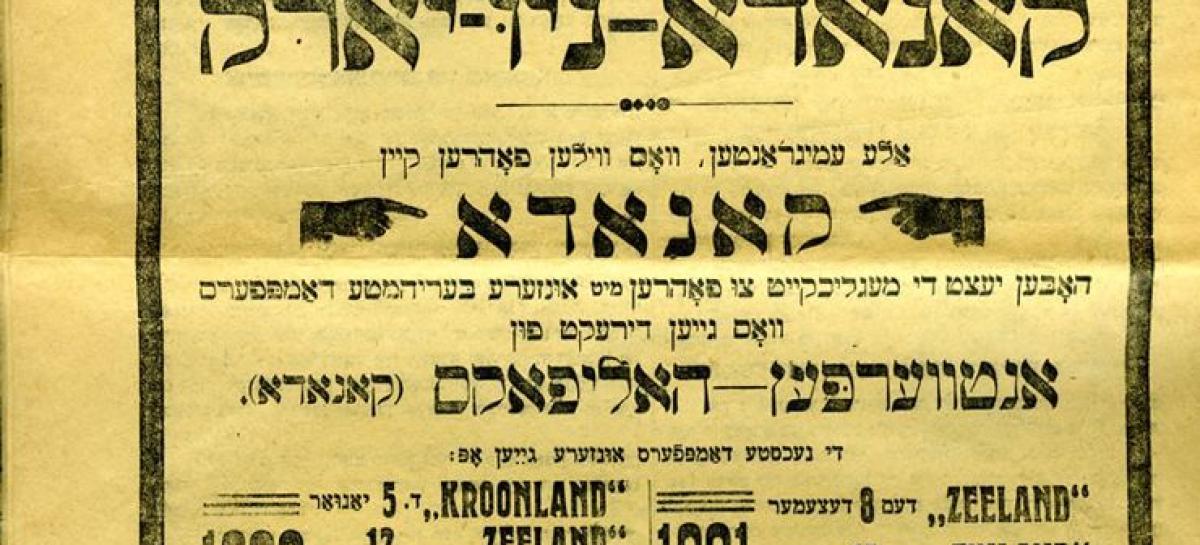It conducted a vigorous advertising campaign and used an extensive network of agents. To take one statistic: of the 2.8 million people to exchange tsarist Russia for the United States between 1899 and 1914, 40% were Jewish. These people came largely from Lithuania, White Russia (Belarus), Ukraine, Bessarabia (Moldova) and Poland. In addition, there were also many Austrian-Hungarian Jews. In many cases, these were people of very limited means who were assisted by several Jewish relief organisations in Antwerp. The majority of these migrants came by train through Germany with a minority reaching Antwerp by boat.
Many Eastern European Jews emigrated because of the socio-economic situation, but also because of the climate of discrimination against them and outbursts of anti-Semitism – the pogroms. Significant American lobbying groups composed of Jews ardently opposed measures to restrict immigration.
The number of Jews arriving in Antwerp grew markedly – from 1,200 around 1880 to approximately 20,000 just before the First World War. A Jewish quarter and community gradually arose in the streets surrounding the Central Station. Many Jewish people found work in the fledgling diamond sector either as traders or as setters. A new wave of migrants followed after the war with many Jews fleeing nazi Germany for Antwerp from 1933 onwards.


